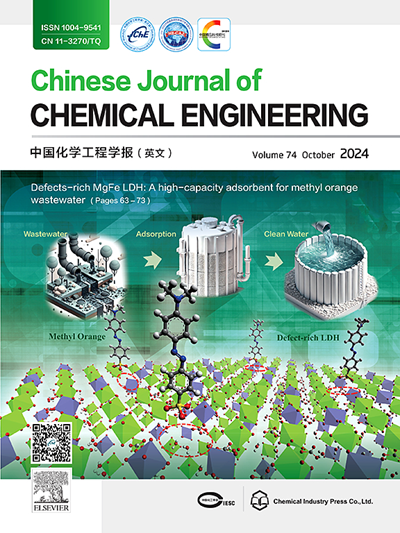A comparative techno-economic analysis for implementation of carbon dioxide to chemicals processes
IF 3.7
3区 工程技术
Q2 ENGINEERING, CHEMICAL
引用次数: 0
Abstract
CO2-based carbon-neutral organics production processes could potentially reshape the chemical industry. However, their feasibility and net carbon footprint rely strongly on the sources of H2. Herein, we present a comprehensive comparative techno-economic analysis of CO2-based methanol (CO2TM) and α-olefins (CO2TO) manufacturing using various feedstock supply modes: (1) the standalone mode with external CO2 but H2 from on-site water electrolysis, (2) the integrated mode with both CO2 and H2 recovered from coal-chemical plants, and (3) the integrated mode with recycled CO2 but H2 from on-site water electrolysis. The integration of CO2TM and CO2TO into coal-to-olefins (CTO) and coal-to-methanol (CTM) facilities is currently cost-effective and can reduce net CO2 emissions by 65.7% and 68.5%, resulting in a three-fold and two-fold increase in carbon efficiency, respectively. As carbon tax policies and electrolysis technologies continue to evolve, standalone CO2TM and CO2TO are projected to become more economically competitive than CTO and CTM by 2035–2045.
实施二氧化碳制化学品工艺的技术经济比较分析
基于二氧化碳的碳中性有机物生产工艺有可能重塑化学工业。然而,其可行性和净碳足迹在很大程度上取决于 H2 的来源。在此,我们对基于二氧化碳的甲醇(CO2TM)和α-烯烃(CO2TO)生产进行了全面的技术经济比较分析,并采用了不同的原料供应模式:(1) 利用外部二氧化碳但利用现场电解水制取 H2 的独立模式,(2) 利用从煤化工厂回收的二氧化碳和 H2 的集成模式,以及 (3) 利用回收的二氧化碳但利用现场电解水制取 H2 的集成模式。目前,将 CO2TM 和 CO2TO 集成到煤制烯烃(CTO)和煤制甲醇(CTM)设施中具有成本效益,可减少 65.7% 和 68.5% 的二氧化碳净排放量,使碳效率分别提高三倍和两倍。随着碳税政策和电解技术的不断发展,预计到 2035-2045 年,独立的 CO2TM 和 CO2TO 将比 CTO 和 CTM 更具经济竞争力。
本文章由计算机程序翻译,如有差异,请以英文原文为准。
求助全文
约1分钟内获得全文
求助全文
来源期刊

Chinese Journal of Chemical Engineering
工程技术-工程:化工
CiteScore
6.60
自引率
5.30%
发文量
4309
审稿时长
31 days
期刊介绍:
The Chinese Journal of Chemical Engineering (Monthly, started in 1982) is the official journal of the Chemical Industry and Engineering Society of China and published by the Chemical Industry Press Co. Ltd. The aim of the journal is to develop the international exchange of scientific and technical information in the field of chemical engineering. It publishes original research papers that cover the major advancements and achievements in chemical engineering in China as well as some articles from overseas contributors.
The topics of journal include chemical engineering, chemical technology, biochemical engineering, energy and environmental engineering and other relevant fields. Papers are published on the basis of their relevance to theoretical research, practical application or potential uses in the industry as Research Papers, Communications, Reviews and Perspectives. Prominent domestic and overseas chemical experts and scholars have been invited to form an International Advisory Board and the Editorial Committee. It enjoys recognition among Chinese academia and industry as a reliable source of information of what is going on in chemical engineering research, both domestic and abroad.
 求助内容:
求助内容: 应助结果提醒方式:
应助结果提醒方式:


